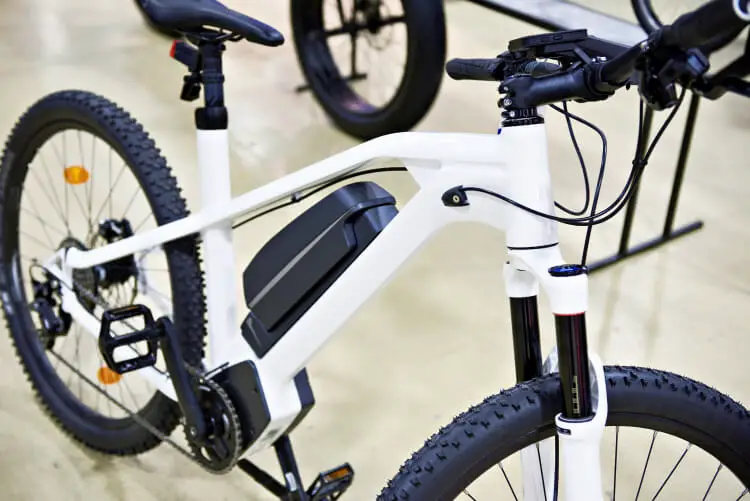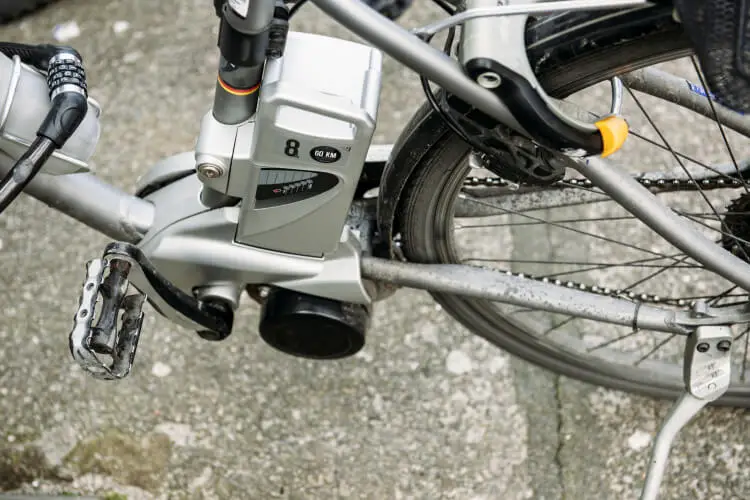Did you know that studies show those who ride electric bikes actually get more exercise? It’s true. Those who ride electric bikes get more exercise because they ride their bikes longer and more often.
Ebikes are booming right now and will only get more popular. They are great for communing or for older adults who want the extra pedal assist.
But despite all of these healthy benefits, many people are intimidated by the electronics and battery. Are they hard to ride? How long does the battery last? Can you still ride it without the battery?
To make things a bit clearer, we’ve put together this comprehensive guide to eBike batteries that will answer all your questions. Questions like “How long do ebike batteries last?”, “When do I need to replace them?”, and “How much do they cost?”
What is the average lifespan of an eBike battery?
Naturally, we want our bike batteries to last as long as possible. After all, ebike batteries aren’t cheap. On my Rad Mini bike, for example, a new battery costs $549. That’s 1/3 the cost of the entire bike!
So, how long do electric bike batteries last in years or charges?
The lifespan of a typical electric bike battery is 800 full charge cycles. Each full charge of the battery, from 0%-100%, counts as one ‘charge cycle’. You can expect an electric bike battery to last 5 years.
This does differ from brand to brand, however. The best way to know about your specific battery is to check your manufacture’s website, owner manual, or contact them directly.
Here are some popular ebike models and how long their batteries last:
| Bike Model | Lifespan (Charge cycles / years) |
| Rad power bikes | 800 cycles / 5 years |
| Juiced bikes | 500-800 cycles |
| Aventon bikes | 500 cycles |
| Trek bikes | 1000 cycles |
Still, there are other ways to estimate lifespan. One of the most reliable ways is to look at what type of battery it is, as each battery type has its own life-expectancy.
Below, we’ve listed the three most common types of eBike batteries, along with the average lifespan of each:
- Lithium Batteries: The most reliable of all rechargeable batteries and will last for over 1000 charge cycles before it needs replacing
- Nickle Batteries: Have an average lifespan of around 500 charge cycles
- Lead Batteries: Usually last for around 300 charge cycles before the quality begins to fade
These numbers are estimates in accordance with the information given by different manufacturers. You may find that some last longer than predicted. Most eBike batteries will also come with a warranty. This is a great way to ensure your battery will last a long time.
Generally speaking, an eBike battery will last somewhere between 3 and 5 years before it will need to be replaced. However, the more regularly you use your eBike, the more the battery will need to be recharged, which will count as a charge cycle.
How long does an eBike battery hold a full charge?
As with the average lifespan of an eBike battery, the amount of use you’ll get from a full charge will also depend on the type of battery itself. It also depends on the power of your eBike as well.
In fact, there are several factors that will affect the amount of use you can get from a full eBike battery charge. How long your ebike battery charge will last will depend on things like:
- Battery size
- Battery age
- Pedal-assist level and throttle use
- How you use your gears
Most manufacturers advise that you charge your eBike battery once a month. And, with that in mind, you’ll be able to get about 4 weeks worth of average use from a single charge.
Again, this does depend on how often you ride your bike and what amount of power you’re using. Most eBikes give you the option to choose between different levels of assistance. Using a higher level of pedal assist or the throttle for a long time will drain the battery faster.
Think of it a bit like your cellphone. The more time you spend making calls, sending messages, and flicking through various apps, the sooner you need to recharge it. Likewise, the less you use it, the longer it holds its charge.
You will get to know how well your battery performs and how long it lasts between charges the more you use it. Everybody has a different way of cycling, so even if you have a friend or family member with the same battery, you might find that you each get a different amount of use.
It’s also worth mentioning that any rechargeable battery loses a gradual amount of power even when it’s not in use. This is called ‘self-discharging’. If your battery remains unused for a long period of time, the chemical reactions inside it can cause irreversible damage. However, preventing this from happening does give you the perfect excuse to get outdoors and cycle as often as possible!
How many miles do you get from a fully charged eBike battery?

The assistance level you choose to ride with will also have an effect on the number of miles you are able to get out of a single charge as well. As will the power of the battery itself, with a 48v battery giving you more miles than a 24v eBike battery.
If you’re relying heavily on the battery to do most of the work, you’ll get fewer miles from a single charge. If you’re happy to pedal a little harder and work alongside your battery, you’ll get a lot more mileage.
Keeping the level of power you’re using in mind, and working across averages, a fully charged eBike battery will give you somewhere between 25-70 miles of use before it needs to be recharged.
How much does an eBike battery cost to replace?
Regardless of the lifespan of your battery, it will eventually need to be replaced. You can ride an ebike without the battery, but it will be sluggish and heavy. So what’s the fun in that?
Depending on the type of battery your eBike uses, you’ll be looking at a cost of around $200 – $600 to replace your eBike battery. Prices do vary between manufacturers and battery type, so it might be worth looking into before you make a purchase.
When the time to replace your battery comes, remember that you don’t necessarily need to buy the same brand battery as the bike itself. As long as it’s the same battery type, you’ll most likely be able to find a cheaper replacement that isn’t branded.
You also don’t need to wait for your battery to die completely before replacing it. Get ahead of the game and keep an eye out for special offers too, such as ‘two-for-one’ sales, or Black Friday deals. These will save you a lot of money in the long run.
You can also get a lot more bang for your buck by choosing a battery with a good warranty that covers you for repair or replacement over a long period of time.
Charging tips for making your eBike battery last longer.
There are a few things you can do to yo prolong the lifespan of your battery and make sure that it operates with the best performance possible. We’ve broken these down into three categories below.
Charging
- Your eBike battery will come with its own charger. Keep this safe and make sure that you only use this charger to recharge your battery. This will avoid your battery from overcharging and protects it from short-circuiting or causing any damage.
- Allow your battery to rest for a little while after you’ve charged it. Make sure that it’s completely cool to the touch before inserting it into your eBike. You should also never let your battery drain all the way down to 0%. Instead, charge it at around 10% and make sure you let it get all the way to 100% before unplugging it.
If you’ve not used for eBike for a couple of months, be sure to partially charge the battery ahead of cycling. This is because it will have self-discharged a little and won’t be at the same level of charge as it was when you last rode your bike.
Cleaning
Electricity and water are not friends! So if you are planning on giving your bike a clean, make sure that you’ve removed the battery first. If the battery has gotten dirty during your ride, use a rung-out dump cloth to wipe it over, and then dry it immediately with a clean cloth. By no means should it ever be immersed in water.
Storage
Storing your eBike battery in a dry, well-protected place when it’s not in use will also help to prolong its lifespan. The ideal storage temperature is somewhere between 32ºF and 68ºF. Be sure to never leave your battery near a heat source, such as a radiator or boiler, either as this may cause it to overheat and explode.

